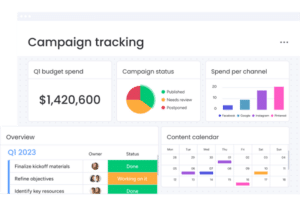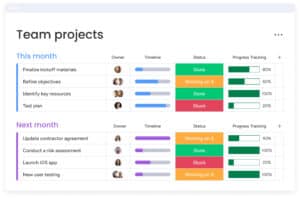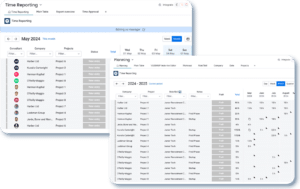Introduction
In today’s fast-paced project management environments, the quest for continual improvement is more relevant than ever. Among the myriad of strategies employed to enhance efficiency and ensure project success, one practice stands out for its simplicity yet profound impact on team dynamics and overall productivity. This practice is the regular retrospective. Understanding the impact of regular retrospectives on project team productivity offers invaluable insights into how teams can navigate the complexities of their projects more effectively. Furthermore, how they can foster an environment of growth and continuous improvement.
Regular retrospectives, a staple in agile project management methodologies, have proven to be a powerful tool in identifying what works, what doesn’t, and how to adapt moving forward. They are not merely meetings but opportunities for teams to reflect, recalibrate, and re-energize their efforts towards shared goals. In this exploration, we delve into how integrating regular retrospectives into your project cycles can transform team productivity and project outcomes from good to exceptional. By understanding and leveraging the impact of regular retrospectives on project team productivity, teams can unlock a new level of efficiency, collaboration, and satisfaction in their work. Join us as we uncover the benefits and best practices of regular retrospectives. To ensure your team is not just moving forward, but reaching new heights of success.
The Essence of Regular Retrospectives
The concept of retrospectives is far from new in the world of project management, but its application has evolved significantly over time. At the heart of agile methodologies, regular retrospectives serve as a critical feedback loop. They allow teams to pause, reflect, and plan for the future with better insight. This section explores the fundamental aspects of regular retrospectives and their pivotal role in shaping high-performing teams.
What Are Retrospectives?
Retrospectives are structured meetings that teams hold at the end of a project cycle or sprint to discuss what went well, what could be improved, and how to incorporate these lessons into future work. Unlike traditional review meetings that often focus solely on project outcomes, retrospectives delve deeper into processes, team dynamics, and individual contributions. They are a cornerstone for teams committed to the impact of regular retrospectives on project team productivity. Furthermore, they facilitate a culture where continuous improvement is not just encouraged but embedded in the team’s operational DNA.
The Frequency of Retrospectives
Determining the optimal frequency for retrospectives can be a balancing act. While agile methodologies typically recommend a retrospective at the end of each sprint, the ideal cadence can vary. For example, based on project scope, team size, and the nature of the work being done. The key is to ensure that retrospectives are frequent enough to provide timely insights and foster adaptability, without becoming repetitive or viewed as a procedural checkbox. Regular retrospectives should be seen as vital pulses of the project’s heartbeat. This is essential for maintaining the impact of regular retrospectives on project team productivity.
Omnitas Newsletter
Sign up for our monthly newsletter to stay up-to-date on our latest blog articles, videos and events!
Thank you!
You have successfully joined our subscriber list.
The Multifaceted Benefits of Regular Retrospectives
Regular retrospectives go beyond simple feedback sessions; they are a critical component of a team’s continuous improvement strategy. By regularly examining past actions and outcomes, teams can illuminate a path forward, marked by enhanced efficiency and deeper collaboration. Let’s explore the significant benefits that underscore the impact of regular retrospectives on project team productivity.
Fostering a Culture of Continuous Improvement
At the heart of agile methodologies lies the principle of continuous improvement—kaizen. Regular retrospectives embody this principle by providing a structured format for teams to reflect on their performance and identify areas for growth. This practice encourages not just the identification of issues but the celebration of successes. As a result, this ensures that all team members are recognized for their contributions. The cycle of planning, action, and reflection ensures that the impact of regular retrospectives on project team productivity is profoundly positive. It fosters an environment where learning and improvement are constant.
Enhancing Communication and Team Cohesion
One of the most significant benefits of regular retrospectives is the improvement of communication and teamwork. By creating a safe space for open dialogue, teams can address underlying issues that may impede productivity. These sessions empower team members to express concerns, share ideas, and collectively devise solutions to enhance workflow and interpersonal dynamics. This collaborative problem-solving approach strengthens team cohesion. As a result, this makes the impact of regular retrospectives on project team productivity not just about the work done but how well team members can work together.
Identifying and Solving Problems Proactively
Regular retrospectives serve as a proactive measure to identify and address problems before they escalate. By regularly reviewing what has worked well and what hasn’t, teams can pinpoint patterns and potential roadblocks early on. This anticipatory approach allows for timely interventions, ensuring that small issues don’t turn into significant setbacks. The ability to adapt and adjust strategies in response to these findings is a key factor in the impact of regular retrospectives on project team productivity. As a result, this leads to smoother project execution and reduced risk of failure.
Boosting Team Morale and Engagement
Acknowledging achievements and addressing team concerns in regular retrospectives significantly impact morale and engagement. These meetings provide a forum for recognizing individual and team successes, which is essential for building confidence and motivation. Furthermore, involving team members in problem-solving and decision-making processes fosters a sense of ownership and responsibility. This heightened engagement is directly linked to the impact of regular retrospectives on project team productivity. This is because motivated teams are more likely to be productive and committed to project goals.
Implementing Effective Retrospectives
Implementing regular retrospectives that truly benefit project team productivity involves more than just scheduling a recurring meeting. It requires thoughtful preparation, execution, and follow-up to ensure that each session contributes to a culture of continuous improvement and teamwork. Here, we outline key strategies for conducting retrospectives that drive real change and foster a productive project environment.
Best Practices for Conducting Retrospectives
To maximize the impact of regular retrospectives on project team productivity, it’s essential to adhere to several best practices. Preparation is crucial. Define clear objectives for each session and ensure all team members understand the purpose and value of retrospectives. Facilitate an inclusive environment where everyone feels comfortable sharing their insights and feedback. Employ a structured approach to guide the discussion, such as the “What Went Well? What Didn’t? What Can We Improve?” framework, to ensure that the conversation is balanced and productive. Importantly, focus on actionable outcomes. Every retrospective should conclude with clear, agreed-upon action items that address identified issues or opportunities for improvement. These practices ensure retrospectives are not only reflective but also forward-looking. As a result, paving the way for tangible enhancements in team dynamics and project execution.
Tools and Techniques for Efficient Retrospectives
Leveraging the right tools and techniques can significantly enhance the efficiency and effectiveness of retrospectives. Digital project management platforms like monday.com offer features that facilitate seamless retrospectives. As a result, this enables teams to document discussions, track action items, and monitor improvements over time. Furthermore, with its automation capabilities, monday.com can streamline the follow-up process. This ensures that action items are assigned and progress is tracked without manual intervention. Additionally, various retrospective techniques, such as the Start-Stop-Continue framework or the Sailboat exercise, can help teams explore different perspectives and stimulate more creative problem-solving. By selecting the appropriate tools and techniques for your team’s specific needs, you can ensure that retrospectives are engaging, productive, and lead to meaningful improvements in project team productivity.

The Long-Term Impact on Productivity and Project Success
The benefits of regular retrospectives extend far beyond the immediate aftermath of the meetings themselves. Over time, these sessions can significantly influence a team’s approach to work, their efficiency, and ultimately, the success of projects they undertake. By embedding a culture of continuous reflection and improvement, organizations can achieve lasting changes that propel their projects towards greater achievements.
Quantifiable Gains from Regular Retrospectives
The impact of regular retrospectives on project team productivity is not merely anecdotal; it is measurable. Studies and real-world experiences from project teams across various industries have shown improvements in several key performance indicators following the adoption of regular retrospective practices. These include reduced project delivery times, enhanced quality of work, lower error rates, and improved team satisfaction. Quantifiable gains also manifest in the form of increased return on investment (ROI) for projects, as teams become more adept at navigating challenges and leveraging their strengths. By systematically addressing areas for improvement and reinforcing successful strategies, teams build a stronger foundation for project success. This is further reflected in their performance metrics.
Conclusion
The journey through the impact of regular retrospectives on project team productivity has illuminated the undeniable value that these reflective sessions bring to project teams. Regular retrospectives are more than just meetings. They are a strategic tool that fosters continuous improvement, enhances team cohesion, identifies and resolves challenges proactively, and significantly boosts morale and engagement. The long-term benefits are clear: quantifiable gains in productivity, project success, and team satisfaction.
However, understanding the importance of regular retrospectives and effectively implementing them are two different challenges. This is where powerful project management platforms like monday.com become invaluable. With its versatile features designed to streamline communication, track progress, and facilitate collaboration, monday.com is an excellent resource for teams looking to elevate their retrospective practices and, by extension, their project outcomes.
As leading partners of monday.com in the EMEA region, we at Omnitas possess the expertise and experience necessary to help you harness the full potential of this platform. Whether you’re new to monday.com or looking to optimize its use in your project management processes, our team is here to guide you every step of the way.
We invite you to begin your journey towards more effective project management by trying out monday.com through our free trial link. Discover how this platform can transform your team’s productivity and project success. If you need assistance in implementing the platform or tailoring it to fit your specific business needs, don’t hesitate to contact us below. Together, we can ensure that you leverage monday.com’s capabilities to their fullest, driving your projects to new heights of efficiency and success.
If you found this blog post useful, make sure to sign up for our monthly newsletter below. Stay in the loop regarding all things business efficiency and automation!
























